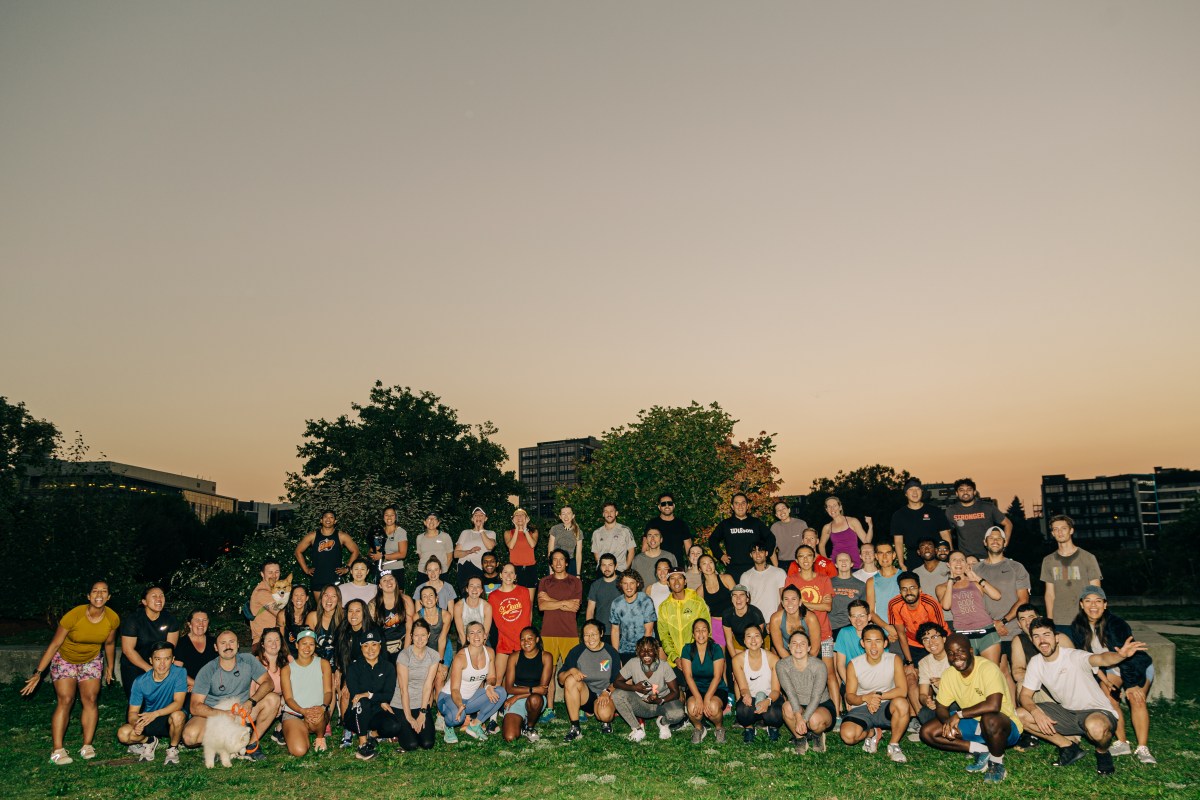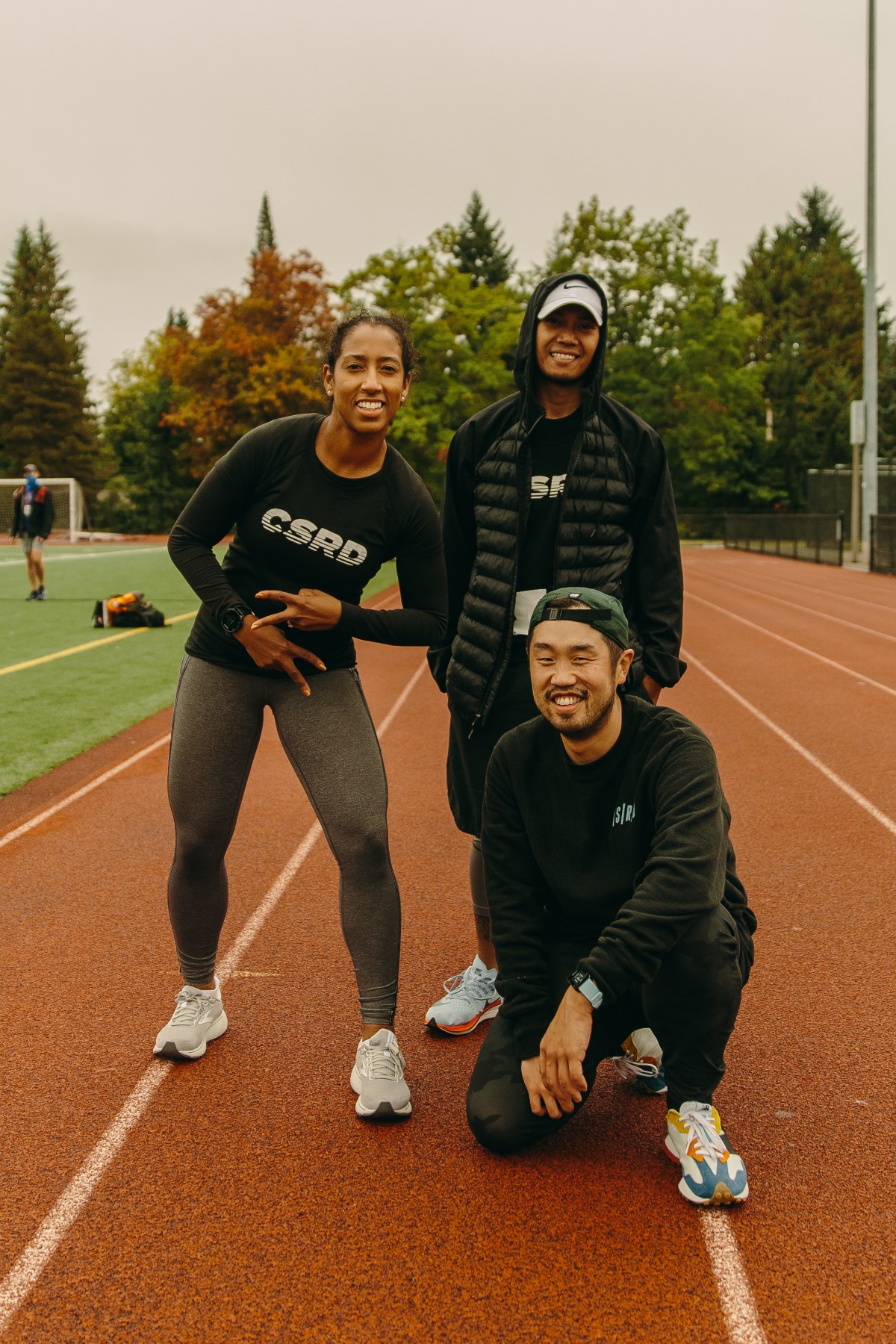On a Monday morning in February of 2017, Ashley Davies, Miran McCash and David Oh set out on a 3-mile run alongside the Seattle waterfront. The three had met in a neighborhood Nike working group the yr earlier than, and when the group ended, they missed the group and the connection it offered.
Davies, who has a day job in schooling specializing in racial fairness at Seattle Public Faculties, says the buddies bonded over recognizing the significance of group in working. Initially from the East Coast, Davies had been a runner since highschool, when she instantly confirmed expertise in cross nation. Nonetheless, as a Black girl, she’s usually felt othered within the working world. She is aware of different runners with marginalized identities, together with McCash and Oh, have felt the identical.
“For the three of us, working is part of the inspiration of our lives, however, that mentioned, it comes with the intersectionality of [our other identities]. I’m a Black girl, I’m at all times working in a feminine Black physique,” she says. “We wished to make a secure house for us to be who we’re and create group—to make use of one thing we love as a car to carry consciousness.”
Throughout that 3-mile run collectively, Davies, Oh and McCash realized they’d need to create the house they wished themselves. They invited different former Nike group members and mates to affix them for a run the following week at Seattle’s Lake Union.
Davies and her co-founders got here up with a credo, “All faces, all paces,” to encapsulate who they have been and what they wished to be as founders of a run membership; they’d all felt excluded in working, despite the fact that it was such a core a part of their lives and identities. Davies stop working for some time in school due to the strain of being on an all-white Division One observe workforce, the place she didn’t have anybody from the same background to narrate to. Due to experiences like that, it felt essential for Davies, McCash and Oh to create an setting the place folks may look and establish any method—and run at any tempo. “Group is the central a part of it and the motion comes after,” Davies says.
Folks confirmed up and stored displaying up week after week for cold runs alongside the water. They even caught round when the season modified. This new crew, Membership Seattle Runners Division (CSRD), took off, and in a a lot larger method than the founders anticipated. The group nonetheless meets each Monday at 6:30am, and Davies says that just about six years later, they virtually at all times have a brand new participant at every run.

Group is a difficult factor to construct and hold going. Despite the fact that the group has flourished, the founders nonetheless take into consideration how CSRD is structured, and if the best way they set up occasions, entice new members and plan periods is significant to present members and the opposite communities they’re a part of. They do two group runs per week, as a result of Davies says consistency is vital in creating an area the place folks really feel comfy and secure. They’ve additionally expanded geographically and thematically, to host occasions like a yearly Satisfaction run and a Black historical past run/stroll final yr in South Seattle, a historically multiethnic and multicultural neighborhood that’s going through the pressures of gentrification. “We’re actually cognizant of calling [that event] a run/stroll, as a result of we wish to entice individuals who don’t essentially come to run,” Davies says. The co-founders’ targets are twofold: They’re pulling folks right into a secure and wholesome house and utilizing working as a device to speak about group growth and social justice. CSRD simply hosted a mile and marathon coaching program with Black Males Run, to provide folks a place to begin for working, and to speak concerning the well being disparities that Black males face.
“We’re persevering with to seek out methods to companion with folks and actually give attention to BIPOC companies and organizations,” Davies says. “We’re being aware of who we’re supporting, and of various elements of town.”
Davies and her co-founders are personally making an attempt to open up that house by making the group way more than a working membership that’s centered on coaching plans, race outcomes and metrics. All of them acknowledge that working—whether or not as a passion, well being apply, type of competitors or meditation—doesn’t occur in isolation from our every day circumstances. They know that identification, class and race impact how and the place we really feel secure, who will get to maneuver and who has entry to out of doors environments. CSRD seeks to deal with the fears and challenges that include that actuality, however the group additionally goals to raise pleasure of motion, and the significance of doing one thing good for our our bodies.

Davies says that concept of a secure house, in working or in any form of exercise could be sophisticated, particularly for girls and folks of coloration who can face actual threats once they run. And security doesn’t simply imply carrying heat gear or glowing vests when it will get darkish out. “Operating is a lot greater than a pair of sneakers and time,” Davies says. “We’re centered on psychological security, and there are such a lot of parts of that.” She says CSRD management is making an attempt to unpack and handle all of the features of how a member would possibly really feel secure once they’re shifting their physique exterior, from how they appear and feel of their working gear, to the working jargon they may not perceive.
Davies says CSRD leaders give attention to consistency, openness and checking in. She and her co-founders, who volunteer their time, attempt to mannequin the secure and welcoming setting they wish to see in a working group. “Each time you collect folks you [can] have affect. Amongst our management group, we’re making an attempt to be approachable and develop and evolve on what it means to be a secure, open place,” she says. They every have totally different strengths and abilities. Oh, as an illustration, is a photographer; taking candid pictures can draw folks out and assist get them excited, particularly at occasions.
The CSRD founders had no thought what would occur on that chilly Monday in 2017, however from the beginning they determined they wished one new participant at each group run. Six years on, they’ve met the aim each week. Davies says that’s proof to them that they’re filling a necessity, and every new face means their group is rising.
Learn extra on working and group by testing our Let’s Run Collectively collection.
